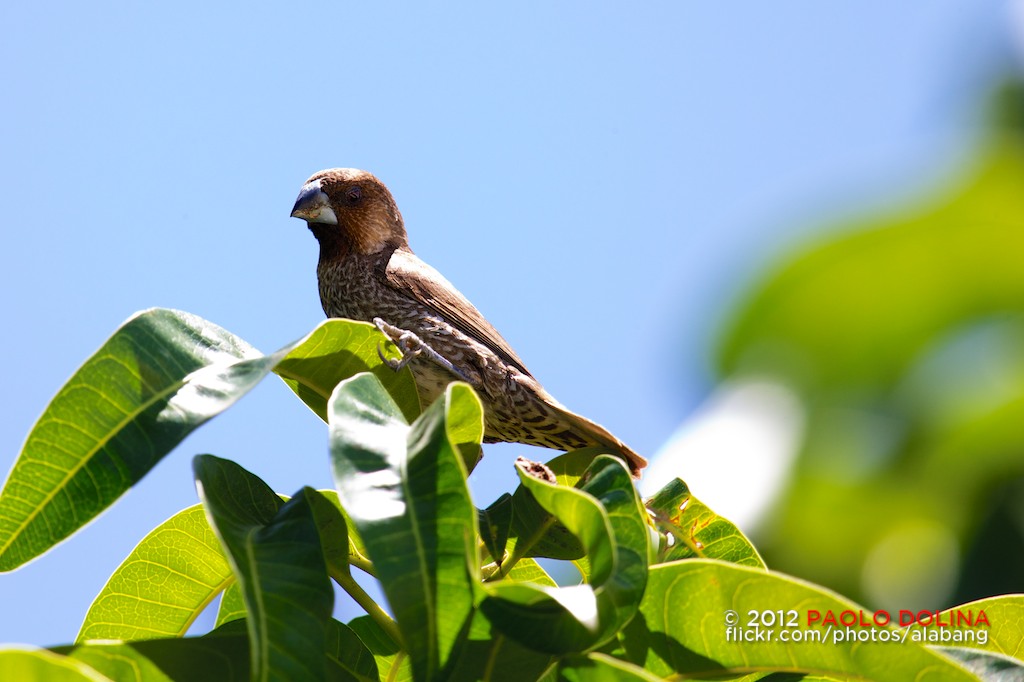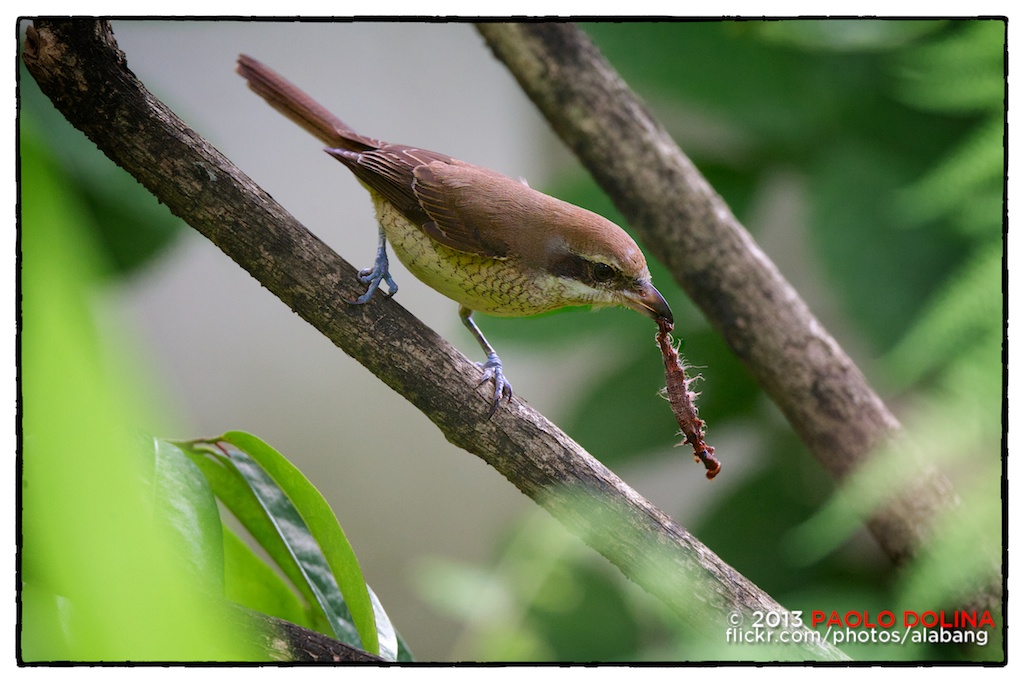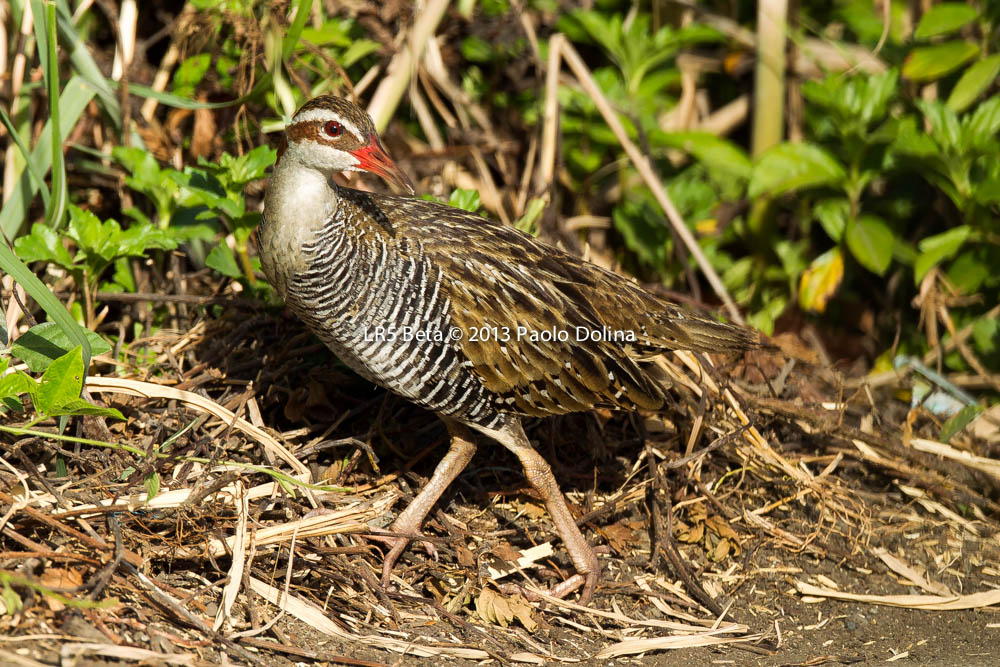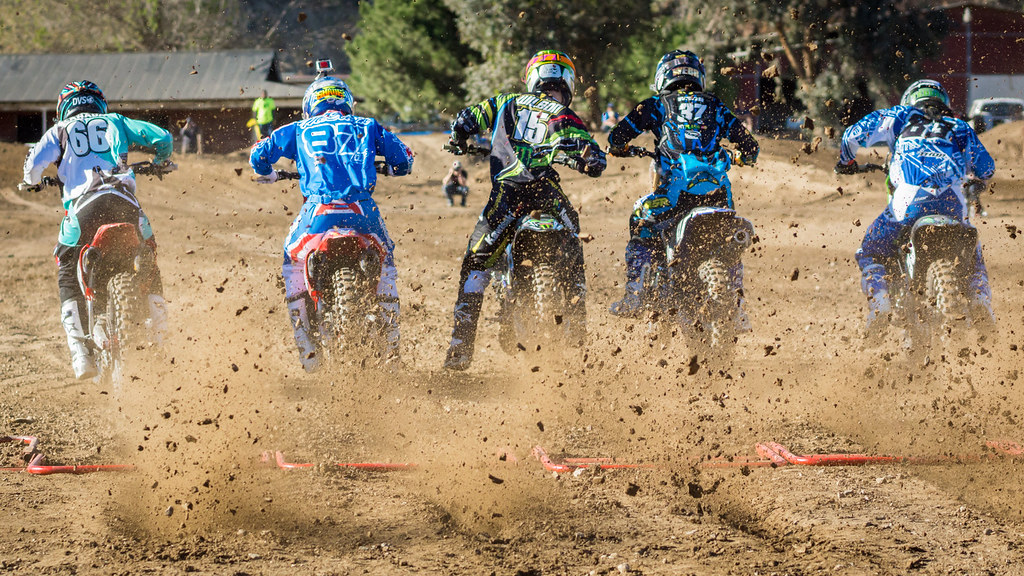You are using an out of date browser. It may not display this or other websites correctly.
You should upgrade or use an alternative browser.
You should upgrade or use an alternative browser.
Lens Flair
- Thread starter Overheat
- Start date
evoWALO
Well-Known Member

Spotted Munia (Lonchura punctulata) by alabang, on Flickr
Being a highly sociable bird, the scaly-breasted munia is usually found in small groups, which sometimes include other species of the genus Lonchura. The diet of the scaly-breasted munia comprises mainly seeds, and this species spends much of its time foraging off the ground. It also takes seeds directly from plants such as rice during the harvest season, when the kernels are maturing (2).
Typically, Lonchura species build dome-shaped nests (7). Pairs of scaly-breasted munias will build nests from grass, straw and bamboo leaves. The nests can be found in bushes and usually contain four to seven eggs (2). Species within the Lonchura genus usually incubate their eggs for 15 to 18 days, and once hatched, the chicks grow rapidly and are fully independent within a few months (7).
Source: http://www.arkive.org/scaly-breasted-munia/lonchura-punctulata/
Location: http://en.wikipedia.org/wiki/Muntinlupa
Settings: 1/500 ?/9 ISO 1000 1200mm
Boobo-oobo
Well-Known Member
Boobo-oobo
Well-Known Member
Zagreb should be there somwhere, right
Nice one
I checked, it was
Thank you

Black Z Eddie
Well-Known Member
evoWALO
Well-Known Member

Brown Shrike (Lanius cristatus) by alabang, on Flickr
The Brown Shrike is a migratory species and ringing studies show that they have a high fidelity to their wintering sites, often returning to the same locations each winter.[20][21][22] They begin establishing wintering territories shortly on arrival and their loud chattering or rattling calls are distinctive. Birds that arrive early and establish territories appear to have an advantage over those that arrive later in the winter areas.[23][24] The timing of their migration is very regular with their arrival in winter to India in August to September and departure in April.[25] During their winter period, they go through a premigratory moult.[20] Their song in the winter quarters is faint and somewhat resembles the call of the Rosy Starling and often includes mimicry of other birds. The beak remains closed when singing and only throat pulsations are visible although the bird moves its tail up and down while singing.[5][26]
The breeding season is late May or June and the breeding habitat includes the taiga, forest to semi-desert where they build a nest in a tree or bush, laying 2-6 eggs.[27]
They feed mainly on insects, especially lepidoptera.[28] Like other shrikes, they impale prey on thorns. Small birds and lizards are also sometimes preyed on.[29] A white-eye (Zosterops) has been recorded in its larder.[5] They typically look out for prey from a perch and fly down towards the ground to capture them.[30]
Source: http://en.wikipedia.org/wiki/Brown_Shrike
Location: http://en.wikipedia.org/wiki/Muntinlupa
Settings: 1/400 ?/5.6 ISO 2500 800mm
evoWALO
Well-Known Member

Buff-banded Rail (Gallirallus philippensis) by alabang, on Flickr
The Buff-banded Rail (Gallirallus philippensis) is a distinctively coloured, highly dispersive, medium-sized rail of the family Rallidae. This species comprises several subspecies found throughout much of Australasia and the south-west Pacific region, including the Philippines (where it is known as Tikling), New Guinea, Australia, New Zealand (where it is known as the Banded Rail or Moho-pereru in M?ori),[2] and numerous smaller islands, covering a range of latitudes from the tropics to the Subantarctic.
It is a largely terrestrial bird the size of a small domestic chicken, with mainly brown upperparts, finely banded black and white underparts, a white eyebrow, chestnut band running from the bill round the nape, with a buff band on the breast. It utilises a range of moist or wetland habitats with low, dense vegetation for cover. It is usually quite shy but may become very tame and bold in some circumstances, such as in island resorts within the Great Barrier Reef region.[3]
The Buff-banded Rail is an omnivorous scavenger which feeds on a range of terrestrial invertebrates and small vertebrates, seeds, fallen fruit and other vegetable matter, as well as carrion and refuse. Its nest is usually situated in dense grassy or reedy vegetation close to water, with a clutch size of 3-4. Although some island populations may be threatened, or even exterminated, by introduced predators, the species as a whole appears to be safe and its conservation status is considered to be of Least Concern.
Source: http://en.wikipedia.org/wiki/Buff-banded_Rail
Taken: http://en.wikipedia.org/wiki/Los_Baños,_Laguna
Settings: 1/200 ?/8 ISO 100 800mm
- - - Updated - - -

Buff-banded Rail (Gallirallus philippensis) by alabang, on Flickr
The Buff-banded Rail (Gallirallus philippensis) is a distinctively coloured, highly dispersive, medium-sized rail of the family Rallidae. This species comprises several subspecies found throughout much of Australasia and the south-west Pacific region, including the Philippines (where it is known as Tikling), New Guinea, Australia, New Zealand (where it is known as the Banded Rail or Moho-pereru in M?ori),[2] and numerous smaller islands, covering a range of latitudes from the tropics to the Subantarctic.
It is a largely terrestrial bird the size of a small domestic chicken, with mainly brown upperparts, finely banded black and white underparts, a white eyebrow, chestnut band running from the bill round the nape, with a buff band on the breast. It utilises a range of moist or wetland habitats with low, dense vegetation for cover. It is usually quite shy but may become very tame and bold in some circumstances, such as in island resorts within the Great Barrier Reef region.[3]
The Buff-banded Rail is an omnivorous scavenger which feeds on a range of terrestrial invertebrates and small vertebrates, seeds, fallen fruit and other vegetable matter, as well as carrion and refuse. Its nest is usually situated in dense grassy or reedy vegetation close to water, with a clutch size of 3-4. Although some island populations may be threatened, or even exterminated, by introduced predators, the species as a whole appears to be safe and its conservation status is considered to be of Least Concern.
Source: http://en.wikipedia.org/wiki/Buff-banded_Rail
Taken: http://en.wikipedia.org/wiki/Los_Ba%C3%B1os,_Laguna
Settings: 1/200 ?/8 ISO 100 800mm
Top Geek
Forum Addict
Dang, how do you guys get access to these cars made of pure sexy?
Lastsoul
Well-Known Member
- Joined
- Jul 9, 2005
- Messages
- 2,180
- Location
- Finland
- Car(s)
- MX5, 406 Coup?, 106 Rallye, Porsche 924, X300 Six
On my behalf there are few reasons. Firstly I'm involved in two Finnish automotive start-up websites (Digiauto.fi & Ajakaamme.net), to which I've done road tests of few nice cars (Audi R8 and 991 as a highlights). Few R8 pictures in previous pages come from the test. The SLS shoot was a project for a student organization (I'm studying mechanical engineering in the largest university of Finland, and things somethings get a bit out of hand. In a good way). Due to Finnish weather we couldn't drive the thing outside parking place, but it still was quite a privilege to get an access to it in the first place.
Anyway, trying to take as good pictures as I possibly can (conditions permitting) and building good contact network helps a lot. And sheer luck can make miracles sometimes.
Anyway, trying to take as good pictures as I possibly can (conditions permitting) and building good contact network helps a lot. And sheer luck can make miracles sometimes.
evoWALO
Well-Known Member

Black-faced Spoonbill (Platalea minor) by alabang, on Flickr
This is the Black-faced Spoonbill, a very rare bird reported in the news last week.
Read more about it in the link below.
http://www.gmanetwork.com/news/stor...ack-faced-spoonbills-spotted-in-candaba-swamp
===========================
The Black-faced Spoonbill (Platalea minor) has the most restricted distribution of all spoonbills, and it is the only one regarded as endangered. Spoonbills are large water birds with dorso-ventrally flattened, spatulate bills.[2] These birds use a tactile method of feeding, wading in the water and sweeping their beaks from side-to-side to detect prey.[3] Confined to the coastal areas of eastern Asia, it seems that it was once common throughout its area of distribution. It has a niche existence on only a few small rocky islands off the west coast of North Korea, with four wintering sites at Macau, Hong Kong, Taiwan and Vietnam, as well as other places where they have been observed in migration. Wintering also occurs in Cheju, South Korea, Kyushu and Okinawa, Japan, and Red River, Delta Vietnam. More recently, sightings of Black-Faced Spoonbill birds were noted in Thailand, the Philippines, mainland China, and Macau[4] They were classified as an endangered species through IUCN in 2005.[5] Declines in their population are predicted in the future, mainly due to the amount of deforestation, pollution, and other man-made industries.
The Black-Faced Spoonbill population as of 2012 census was recorded at 2,693 birds, with an estimation of 1,600 mature birds. Breeding colonies occur between March and August, on small islands. These birds are known to be crepuscular eaters, using intertidal mudflats.[4]
Conservation efforts have been made, and surveys were taken in order to determine the opinions and awareness of the local residents, residing close to the Black-Faced Spoonbill?s natural habitats.
Source: http://en.wikipedia.org/wiki/Black-faced_Spoonbill
Location: http://en.wikipedia.org/wiki/Candaba,_Pampanga
Settings: 1/500 ?/9 ISO 100 800mm
tquattro
Well-Known Member
evoWALO
Well-Known Member

Female Pied Bush Chat (Saxicola caprata) by alabang, on Flickr
The Pied Bush Chat (Saxicola caprata) is a small passerine bird found ranging from West and Central Asia to South and Southeast Asia. About sixteen subspecies are recognized through its wide range with many island forms. It is a familiar bird of countryside and open scrub or grassland where it is found perched at the top of short thorn trees or other shrubs, looking out for insect prey. They pick up insects mainly from the ground, and were, like other chats, placed in the thrush family Turdidae, but are now considered as Old World flycatchers.
They nest in cavities in stone walls or in holes in an embankment, lining the nest with grass and animal hair. The males are black with white shoulder and vent patches whose extent varies among populations. Females are predominantly brownish while juveniles are speckled.
Source: http://en.wikipedia.org/wiki/Pied_Bush_Chat
Location: http://en.wikipedia.org/wiki/Candaba,_Pampanga
Settings: 1/500 ?/5.6 ISO 160 500mm
Notes: Framed as is, no crop & handheld
evoWALO
Well-Known Member

Chestnut Munia, (Lonchura atricapilla) by alabang, on Flickr
The Chestnut Munia is 11?12 cm in length. The adult has a stubby pale grey-blue bill, black head, and brown body, with a brick red patch on the lower back, visible only when it flies. Some races also have a black belly.
The sexes are similar, but immature birds have uniform pale brown upperparts, lack the dark head and have white to pale buff underparts.
The Chestnut Munia is a small gregarious bird which feeds mainly on grain and other seeds. It frequents open grassland and cultivation. The nest is a large domed grass structure in a bush or tall grass into which 4-7 white eggs are laid.
Philippine birds
Source: http://en.wikipedia.org/wiki/Chestnut_Munia
Location: http://en.wikipedia.org/wiki/Candaba,_Pampanga
Settings: 1/250 ?/5.6 ISO 160 800mm
Notes: Hand-held shooting. Cropped 10.7MP from 16MP frame
PaperBiro
Well-Known Member
- Joined
- Jul 7, 2008
- Messages
- 4,159
- Car(s)
- a Veloster










